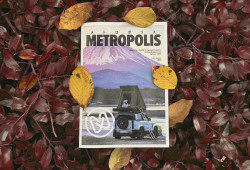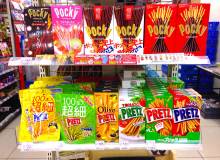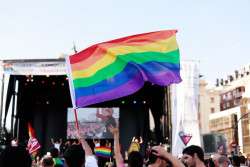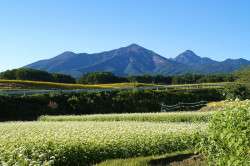
January 13, 2011
Seoul Searching
From K-pop to kimchi, Koreatown in Shin-Okubo has it all
By Metropolis
Originally published on metropolis.co.jp on January 2011

South Korea may be Japan’s closest neighbor, with round-trip flights even cheaper than a shinkansen to Osaka, but that doesn’t mean you need a boarding pass to eat great bulgogi.
 Japan’s largest Koreatown, in the area around Shin-Okubo station near Shinjuku, is home to hundreds of Korean eateries, bars and shops. Many of them feel as though they were plucked straight from the streets of Seoul, creating a multicultural vibe that’s rare in Tokyo—or anywhere else in the country.
Japan’s largest Koreatown, in the area around Shin-Okubo station near Shinjuku, is home to hundreds of Korean eateries, bars and shops. Many of them feel as though they were plucked straight from the streets of Seoul, creating a multicultural vibe that’s rare in Tokyo—or anywhere else in the country.
The first thing you’ll notice about the area—before you even step out of Shin-Okubo station—is the change in accent, shifting from the flat tones of Japanese to the extended vowels of Korean. Outside, buildings are adorned with hangul characters in place of kanji, and two large branches of Nittaku Espace pachinko parlor, whose owners are rumored to be of Korean descent, face off from opposite sides of Okubo Dori. Most businesses greet customers not with “Konnichiwa” but “Annyong haseyo.”
Koreans make up the largest ethnic minority group in Japan, with roughly 100,000 in Tokyo alone. Permanent migrants from 1910 to 1945, when Korea was under Japanese rule, are known as Zainichi, though since the 1980s there has been a steady stream of young Koreans arriving with their cultural identity intact. Koreatown sprang up after World War II and largely services the latter, though the vibrant neighborhood attracts plenty of Japanese “tourists” as well.
 That’s partly thanks to the recent boom of South Korean pop culture (see Star Struck), and Koreatown offers plenty of stores to pick up that Kara 2011 calendar. Korea Geinojin Hiroba on Okubo Dori stocks pens, CD cases and postcards with the likenesses of boy bands from Bigbang to Shinee; it even sells printed pillow cushions. The customers are a mix of Japanese and Koreans—but all female.
That’s partly thanks to the recent boom of South Korean pop culture (see Star Struck), and Koreatown offers plenty of stores to pick up that Kara 2011 calendar. Korea Geinojin Hiroba on Okubo Dori stocks pens, CD cases and postcards with the likenesses of boy bands from Bigbang to Shinee; it even sells printed pillow cushions. The customers are a mix of Japanese and Koreans—but all female.
Tucked away on a side street (the fourth on the right if you’re walking from Shin-Okubo station), Gil’s House is the ultimate shopping destination for young K-pop-hungry girls. The first floor of this cute store is stuffed with inexpensive jewelry and accessories, plus even more boy band-branded ephemera: socks, badges, key rings, T-shirts and even cups. The second floor sells Korean cosmetics, which are highly regarded in Japan.
Star Shop on Okubo Dori also sells idol stuff, including CDs and DVDs, but that’s not all: it’s a one-stop shop for cosmetics and Korean groceries such as coffee, noodles and snacks loaded with nuts or honey. Despite these comforts of home, “99 percent of our customers are Japanese,” says one of the clerks.
The opposite can be said of the secretive shops tucked away on side streets that sell pirated Korean TV shows on DVD—without subtitles.
 Stalls serving hot street snacks are everywhere in Koreatown, just as they are in Seoul. Both Okubo Dori and Route 302 are speckled with stands selling tteokbokki (mochi, fish cakes, meat and veg in a bright red chili sauce), japchae hotteok (stir-fried glass noodles in a bun) and a sort of Korean variation on oden. I tried a gorgeous honey hotteok (donut-like buns stuffed with honey and crushed nuts) at the counter outside Makori Jumak Juwan, a restaurant on Okubo Dori, though the Popo Yatai stall further up the street looked even better.
Stalls serving hot street snacks are everywhere in Koreatown, just as they are in Seoul. Both Okubo Dori and Route 302 are speckled with stands selling tteokbokki (mochi, fish cakes, meat and veg in a bright red chili sauce), japchae hotteok (stir-fried glass noodles in a bun) and a sort of Korean variation on oden. I tried a gorgeous honey hotteok (donut-like buns stuffed with honey and crushed nuts) at the counter outside Makori Jumak Juwan, a restaurant on Okubo Dori, though the Popo Yatai stall further up the street looked even better.
Indeed, Koreatown is one of Tokyo’s tastiest districts. Since most restaurants are run by Koreans, the food tends to be pretty authentic—as the autographs of visiting Korean celebrities adorning the walls attest. Many establishments have outdoor seating, and given how much colder Seoul is than Tokyo, your average Korean probably considers these quite cozy.
 Perhaps the most famous Koreatown chain is Tonchang, which has two branches on Okubo Dori and several more around Tokyo. Although beef is usually the main attraction at Japanese yakiniku restaurants, pork is just as popular in Korea, and the cuts at Tonchang are as plump as pillows (see Restaurant Review). For bulgogi in more upmarket surroundings, Taisikan on Route 302 offers two floors of high-quality barbecue cuts and other Korean dishes in more salubrious surrounds. The restaurant is decked out like a traditional rustic eatery, with a secluded outdoor terrace set just far enough back from the main road.
Perhaps the most famous Koreatown chain is Tonchang, which has two branches on Okubo Dori and several more around Tokyo. Although beef is usually the main attraction at Japanese yakiniku restaurants, pork is just as popular in Korea, and the cuts at Tonchang are as plump as pillows (see Restaurant Review). For bulgogi in more upmarket surroundings, Taisikan on Route 302 offers two floors of high-quality barbecue cuts and other Korean dishes in more salubrious surrounds. The restaurant is decked out like a traditional rustic eatery, with a secluded outdoor terrace set just far enough back from the main road.
For a different kind of barbecue altogether, try Ozakukyo, hidden on a side street near Route 302, where hunks of pork are cooked to perfection in a huge wooden outdoor oven. The seasoned meat almost literally melts in the mouth—if you’re lucky you’ll find free samples outside the restaurant, so you can see for yourself.
 Despite having three branches dotted around the south side of Koreatown (one on Route 302 near Don Quijote and the others down side streets), Kanton No Omoide is always packed. Metal bulgogi grills adorn the tables, while the house specialty, samgyetang—whole baby chicken stuffed with rice and ginseng in broth—is also available for takeout. The restaurants’ outdoors-indoors façade and old-fashioned wall-mounted TVs give them a nostalgic but friendly vibe.
Despite having three branches dotted around the south side of Koreatown (one on Route 302 near Don Quijote and the others down side streets), Kanton No Omoide is always packed. Metal bulgogi grills adorn the tables, while the house specialty, samgyetang—whole baby chicken stuffed with rice and ginseng in broth—is also available for takeout. The restaurants’ outdoors-indoors façade and old-fashioned wall-mounted TVs give them a nostalgic but friendly vibe.
The streets of Seoul are also lined with pub-style restaurants that serve fried chicken and beer. Chicken Town on Route 302 replicates this no-frills fare in a tiny covered-terrace eatery, with large platters available for sharing and K-pop tunes blaring from the kitchen. I didn’t catch the name of what I ordered (the menu’s in hangul with pictures), but the balls of fried chicken came smothered in a sweet, sticky sauce incorporating ketchup, mayonnaise and gochujang (a paste made of soybeans and chili), sprinkled with nuts and served with salad. “I first ate this when I was in high school in Korea, and I was instantly smitten,” exclaimed the friendly chef as I tucked in.
 Prefer to dine at home? Kankoku Hiroba, the large 24-hour supermarket opposite Don Quijote, sells imported Korean produce such as soup stock, cow stomach, pickles, confectionery and enough varieties of hot chili paste and powder to cremate Satan. You can even pick up dishware, pans and metal chopsticks. Seoul Ichiba is a small supermarket on Okubo Dori that stocks a large selection of instant noodles and other conveniences, plus a range of cosmetics.
Prefer to dine at home? Kankoku Hiroba, the large 24-hour supermarket opposite Don Quijote, sells imported Korean produce such as soup stock, cow stomach, pickles, confectionery and enough varieties of hot chili paste and powder to cremate Satan. You can even pick up dishware, pans and metal chopsticks. Seoul Ichiba is a small supermarket on Okubo Dori that stocks a large selection of instant noodles and other conveniences, plus a range of cosmetics.
Tucked away on a side street next to the access road to Don Quijote’s car park is a selection of restaurants, chic cafes and shops, including Tezukuri Kimchi Hiroba. This small shop offers excellent homemade kimchi and other spicy delights, each sold by weight. Because they’re not laden with chemicals, it’s best to eat them as soon as possible after purchase. Except the marinated chili peppers, that is—sample those little fireballs with extreme caution.
Christianity is South Korea’s most widespread religion; nearly 30 percent of the population is either Protestant or Catholic, and the church looms large in the lives of some 14 million followers. There are several churches in Koreatown, too, and their members are not shy about finding new recruits. Hang around Shin-Okubo station too long and you’re sure to be invited to a service, held in English as well as Korean and Japanese. I was even accosted by a member of the Full Gospel Tokyo Church while standing outside the “rival” Tokyo Lutheran Church on Okubo Dori.
 Just like the bearded carpenter’s son himself, Koreatown’s denizens are partial to a tipple or two, and the local bars feel like they were imported directly from Seoul’s trendy Hongdae district. At the recently refurbished Wa Bar, just a couple of blocks west of Kankoku Hiroba, stylish surrounds and an extensive cocktail menu collide with K-pop cool (see Bar Review).
Just like the bearded carpenter’s son himself, Koreatown’s denizens are partial to a tipple or two, and the local bars feel like they were imported directly from Seoul’s trendy Hongdae district. At the recently refurbished Wa Bar, just a couple of blocks west of Kankoku Hiroba, stylish surrounds and an extensive cocktail menu collide with K-pop cool (see Bar Review).
Live Bar Blue feels totally American (as do many bars in Seoul), thanks to its wide-open layout, colorful drinks rack and performance stage. There wasn’t any live music during my visit, though I’m told the lineup tends to be dominated by blues jam bands. Instead, a gentle jazz soundtrack made for a chilled atmosphere, as my friends and I hogged one of two electronic dartboards.
You don’t need to spend money to enjoy Tokyo’s Koreatown. It’s fun to simply wander the streets, taking in the sights and smells, immersing yourself in a miniature Seoul—and without so much as digging out your passport.
[slideshow id=18]
Address Book
1 Chicken Town. 1-12-6 Okubo. Tel: 03-3232-5188.2 Full Gospel Tokyo Church. 2-2-19 Kabukicho. www.fgtv.jp
3 Gil’s House. 1-4-19 Hyakunincho. www.gils.jp
4 Kankoku Hiroba. 2-31-11 Kabukicho. www.ehiroba.jp
5 Kanton No Omoide. Various locations. www.kanton.jp
6 Korea Geinojin Hiroba. 2-2-3 Hyakunincho. Tel: 03-5272-1259.
7 Live Bar Blue. 1-7-15 Hyakunincho. www.livebarblue.com
8 Makori Jumak Juwan. 2-2-2 Hyakunincho. Tel: 03-3200-4377.
9 Nittaku Espace. 2-10-1 Hyakunincho & 1-11-20 Hyakunincho. www.nittaku.jp/sinokubo.htm
10 Ozakukyo. 1-12-27 Okubo. www.ozakyo.jp
11 Popo Yatai. 2-32-3 Okubo.
12 Seoul Ichiba. 1-16-5 Okubo. www.hanryukan.net
13 Star Shop. 1-7-15 Hyakunincho. Tel: 03-3209-0733.
14 Taisikan. 1-17-9 Okubo. www.taisikan.com
15 Tezukuri Kimchi Hiroba. 1-17-5 Okubo. www.k-yatai.info/shop4.php
16 Tonchang (see Restaurant Review)
17 Tokyo Lutheran Church. 1-14-14 Okubo. www.jelc-tokyo.org
18 Wa Bar (see Bar Review)








